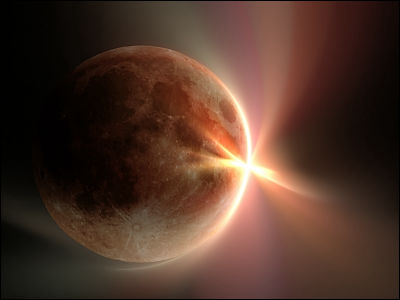NASA research reveals there is 'much more ice than expected' on the moon

The idea that there might be ice on the moon had been whispered about even before humans ventured into space, but in 2018, it was confirmed that ice was actually exposed on the surface of the moon. In a new survey announced by NASA in October 2024, it was reported that the lunar probe Lunar Reconnaissance Orbiter had discovered ice embedded in the lunar surface, and that 'ice deposits on the moon are much more widespread than previously thought.'
Radware Bot Manager Captcha
https://iopscience.iop.org/article/10.3847/PSJ/ad5b55
NASA's LRO: Lunar Ice Deposits are Widespread - NASA Science
https://science.nasa.gov/solar-system/moon/nasas-lro-lunar-ice-deposits-are-widespread/
NASA just found unexpected loads of water ice on the moon | Mashable
https://mashable.com/article/nasa-moon-water-ice-discovery

It was around 1994 that it became known that there was ice on the moon. Since then, various investigations and research have been conducted, and in May 2018, a research team led by Tohoku University discovered the mineral 'moganite,' which requires water for its formation, in a lunar meteorite. They reported that 'a large amount of ice is buried underground on the moon and evaporates on the surface exposed to sunlight.' In addition, in August 2018, a research team from the University of Hawaii conducted a spectral analysis of the shadowed areas of a crater in the polar region of the moon from data from a NASA probe sent in 2008, and discovered that 'ice is mixed with rocks.'
Direct evidence of ice on the moon found - GIGAZINE

By Jonatan Pie
Now, NASA has announced new findings and insights about ice on the moon. A study published on October 2, 2024 in IOP Publishing, a peer-reviewed electronic journal of the British Institute of Physics, shows that ice or water exists not only in the 'permanent shadow region' near the south pole of the moon, but also in the area up to 77 degrees south latitude outside the south pole. Timothy P. McClanahan, a NASA researcher who led the study, said in a statement, 'The amount of ice accumulation on the moon is more widespread than previously thought. We cannot precisely measure the volume of the ice sheet in the permanent shadow region or determine whether it is buried under a layer of dry topsoil. However, the area we discovered should have at least about 5 liters more ice than the surrounding areas.'
The image below shows the area of permanent shadow on the Moon north of 80 degrees south latitude. Blue indicates the distribution of water or ice, and you can see that it is distributed over a wide area.

Possible reasons for the presence of water on the Moon include the possibility that comets and meteorites have repeatedly collided with it over the course of many years, bringing with them abundant water, the theory that water vapor has naturally seeped out from the Moon's underground, and the process in which hydrogen in the solar wind , which are extremely hot, ionized particles emitted from the Sun, reacts with oxygen in the Moon's soil to form water. Ice is quickly lost on the surface exposed to direct sunlight, but in areas in permanent shadow, which are extremely cold and never exposed to sunlight, the water molecules that have accumulated over the years remain.
The research team is also using the Lunar Reconnaissance Orbiter's Lunar Neutron Detector Instrument to measure neutrons in the ice deposits. According to McClanahan, if all the ice has the same hydrogen concentration, they hypothesized that they would detect proportionally higher hydrogen depending on the area, and as a result, they found that the larger the area of ice, the more hydrogen they observed.
The Artemis program, announced in 2019, plans to land near the south pole of the moon, one of the reasons for which is to investigate and collect samples of the ice that has been observed in detail. One of the important missions of the Artemis program is for astronauts who complete the program in 2026 to bring back ice samples and analyze their composition more specifically. For this reason, it is important to investigate how much ice there is and in what areas of the moon.
Related Posts:
in Science, Posted by log1e_dh






